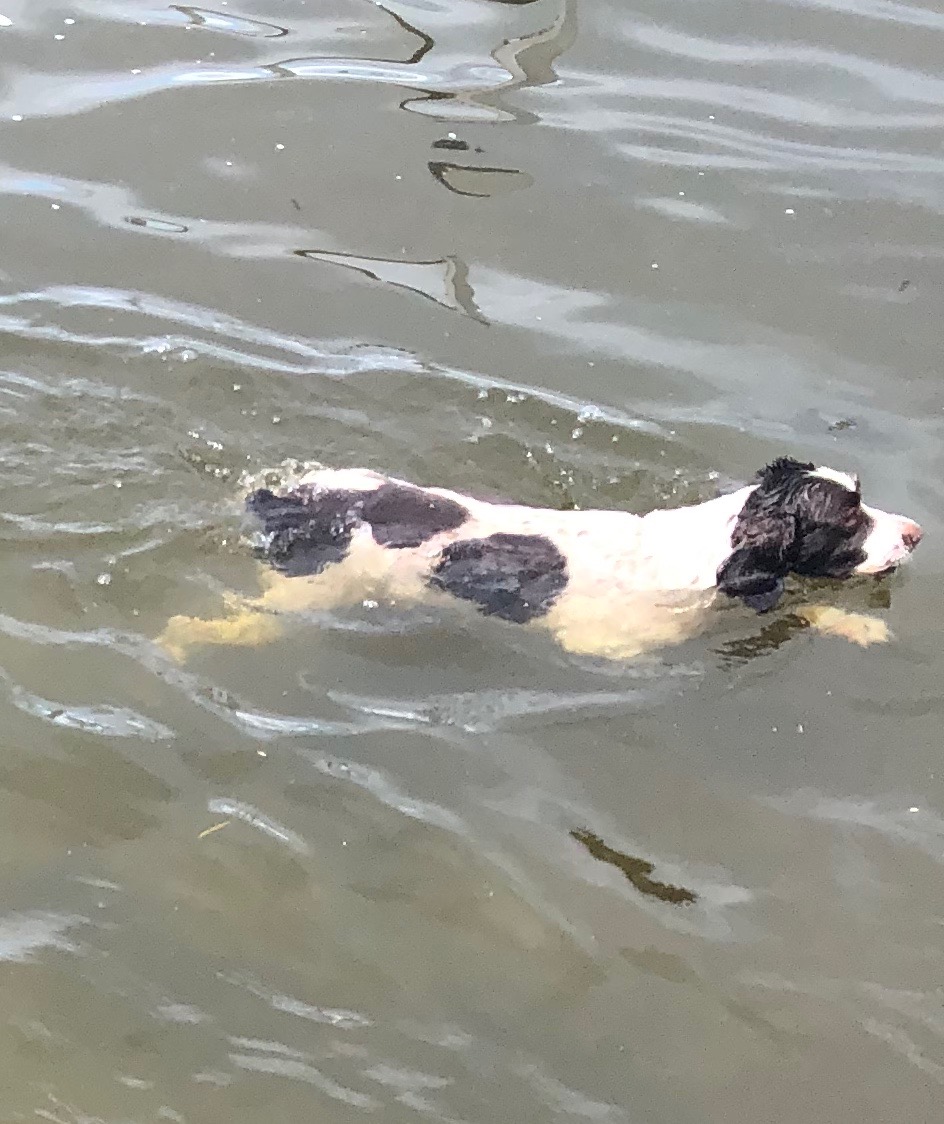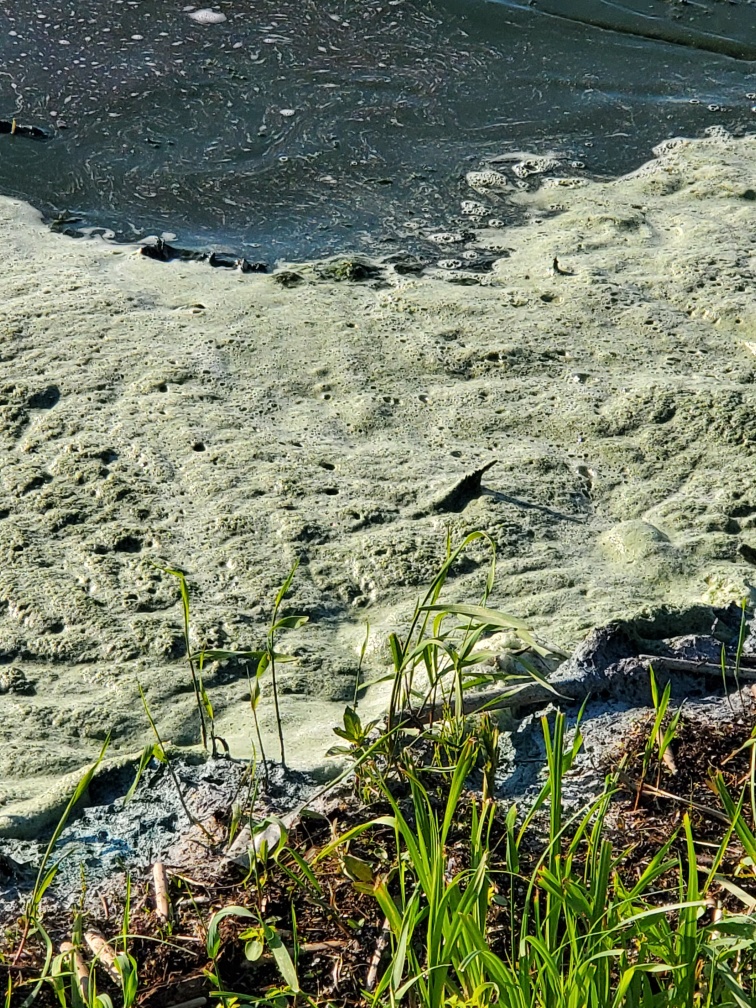An Edmonton family is warning Albertans about blue-green algae after their beloved nine-year old Springer Spaniel died over the weekend.

Kaylee Moser said her parents dog, Daisy, quickly became ill after going in the water at Moose Lake near Bonnyville, Alta., and the family suspects blue-green algae is to blame.
“It’s absolutely heartbreaking,” Moser said. “We’ll get through it, but it’s obviously heartbreaking.”
The family had gathered at their cabin in the area, and along with Daisy, children were swimming in the lake on Friday.
On Saturday, Moser said the wind shifted and a thick sludge blew in along the shoreline.
The family put up barricades to keep their children and pets out, but Moser said Daisy managed to jump in and was in the lake for less than 20 seconds.
“We got her out and washed her off and within like a half an hour she was already starting to react to it.”

Daisy, normally energetic and playful, had thrown up and was lethargic. The family rushed their dog to the Bonnyville Veterinary Clinic where she died.
At first, the family thought Daisy was having an allergic food reaction, but Moser said the vet noticed green stains on Daisy’s paws and told the family their dog wasn’t the only pet that had been brought to the clinic over the weekend.
“We had seen several pets on the weekend,” said Dr. Melanie Koetke, a veterinarian at the Bonnyville clinic.
“All had a history of exposure to blue-green algae.”
Koetke said the exposure and clinical signs pointed to the likelihood of blue-green algae toxicity.
The vet said if you’re in doubt about what may be in the water, keep animals on a leash because even if they wade into the water, the toxic algae can be licked off their paws.
Moser said she called Alberta Health Services Monday morning to report the sudden illness and death, and was directed to a health official in the region who told her the water would be tested.
An advisory about blue-green algae in Moose Lake was sent out on Monday, July 6 by AHS.
In that advisory, AHS warned to avoid all contact with the blooms and to not allow pets to wade or swim where the blue-green algae was visible.
“Exposure to the bacteria may be fatal to pets,” AHS said in the warning.
On May 8, Alberta’s chief medical officer of health Dr. Deena Hinshaw said resources for water sample testing were stretched thin and warned those using Alberta lakes to watch for signs of blue-green algae.
“I wanted to let people know that water testing at Alberta beaches will be delayed,” Hinshaw said. “This is a result of public health staff and testing laboratories, prioritizing monitoring and testing for COVID-19.”
Hinshaw said as lab capacity increased, the province would reassess resources to see if the water testing program could resume later in the summer.
AHS also said its Routine Recreational Water Quality Monitoring Program has identified priority lakes for regular blue-green algae testing and monitoring.
The lakes have been prioritized by popular beach use and history of blue-green algae.
“Operators of priority beaches are asked to submit weekly samples to AHS for testing to monitor for blue-green algae,” an AHS spokesperson said.
Alberta Parks also lists 15 provincial park lakes that will be monitored for blue-green algae blooms.
Moose Lake was not on that list.
“Appearing like scum, grass clippings, fuzz or globs on the surface of water, blue-green algae can be blue-green, greenish-brown, brown, and/or pinkish-red, and often smell musty or grassy,” said the AHS advisory.
People who come in contact with blue-green algae or ingest it may experience numerous symptoms, which could include skin irritations, rash, sore throat, sore red eyes, swollen lips, nausea and vomiting and/or diarrhea.




Comments